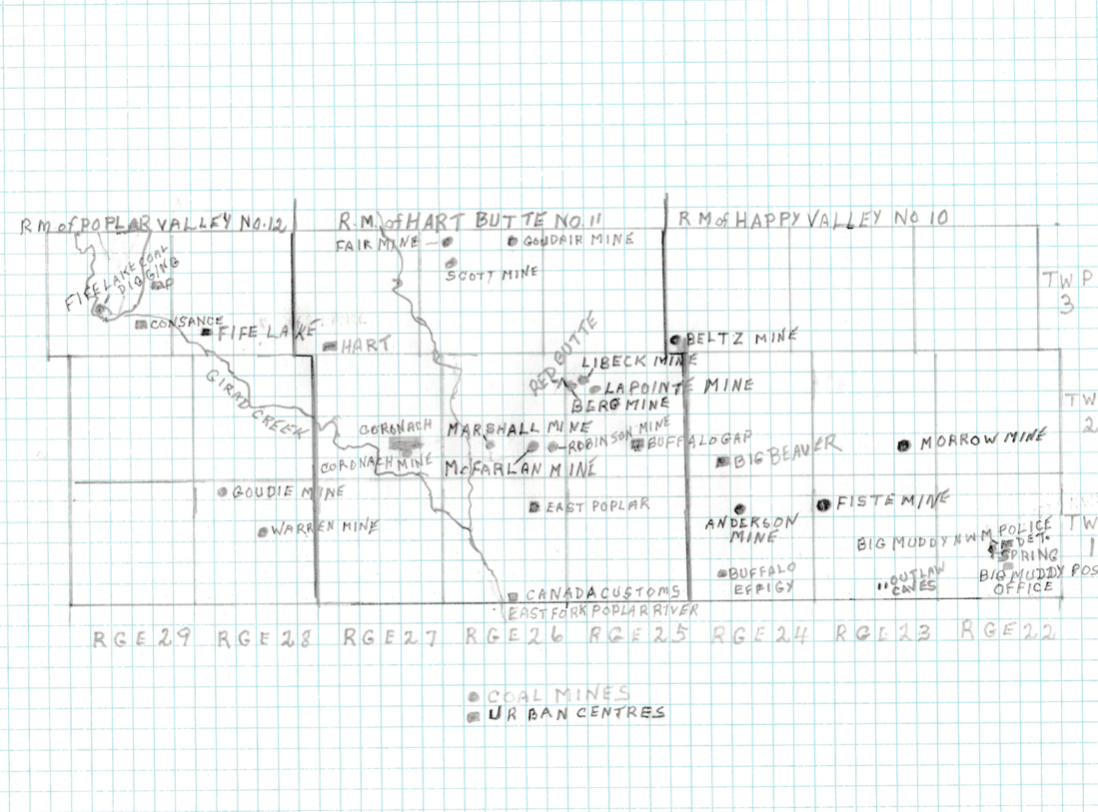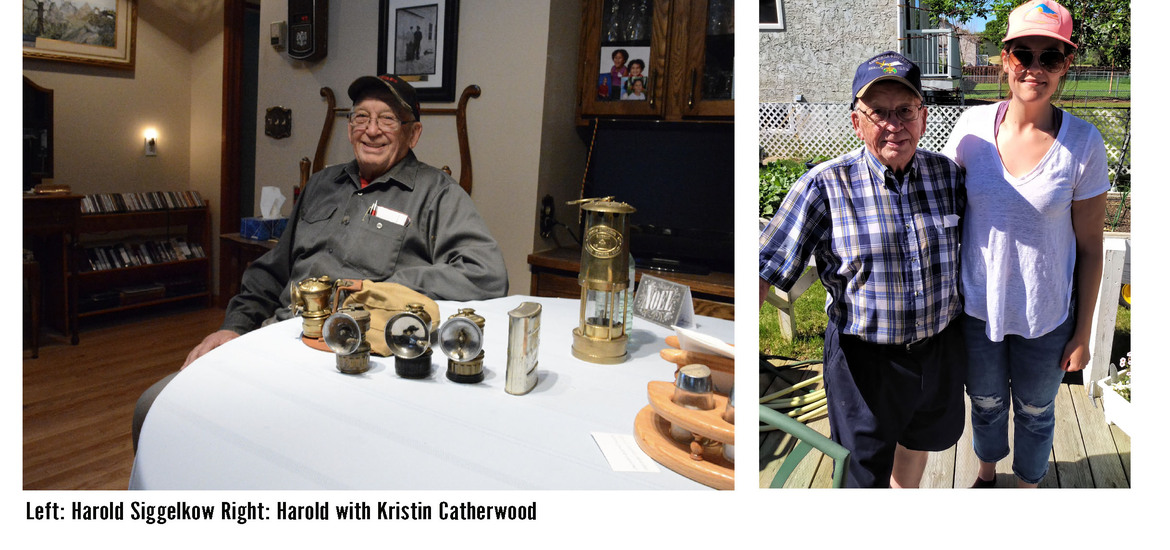I first met Harold Siggelkow in 2013, at a tourism meeting in Coronach. He was in the museum, quietly ready to give anyone a tour should they want one. We struck up a conversation and he started to share stories of the underground coal mines that used to operate in the area. I had grown up in southern Saskatchewan and yet knew nothing about this history. Through Harold’s stories, I became fascinated by this “underground” heritage that left very little on the surface to find. My ’folklorist sense’ started to tingle, and I asked Harold for his phone number in case I ever wanted to get in touch with him about the mines.
I kept that piece of paper, with his name written in block letters, in my files for the next three years. At our time of first meeting, I was still a graduate student trying to finish my thesis. A few years later, in my first year working at Heritage Saskatchewan as the Intangible Cultural Heritage Development Officer, I was working on, well, developing intangible cultural heritage in Saskatchewan. I was trying to find ways to connect diverse audiences with heritage in a way that was engaging, relevant, and clearly demonstrated living heritage at work in our communities.
One day I drove through Coronach and I remembered Harold Siggelkow. I dug up that piece of paper and gave him a call to tell him I wanted to have a chat with him about coal mining. We met up at Deb’s Country Kitchen in October 2016, and after coffee, we made our way to his own kitchen, a place I would spend much time in over the coming years. He delved into his filing cabinet and brought out a document, written on several pieces of foolscap in neat handwriting, double spaced, which told his story of mining coal underground in Coronach in the late 1940s.
That document was eventually the centre-piece of our first living heritage project, Coal in Coronach, which grew from that initial encounter I had with Harold at the Coronach Museum in 2013. Throughout the winter of 2016-2017, I spent many hours with Harold in person, and over the phone. He drove me around the coal-rich countryside, pointing out the scant remains and clues on the landscape that pointed to long defunct mines. In his memory, he held the locations of all the underground mines in the area that, to our knowledge, had never been named on maps, never been recorded anywhere -- a history almost lost. He committed those memories to paper, creating a map of mines for the centrefold of the Coal in Coronach booklet.

He also introduced me to other people in the community who had stories to tell about coal: Arleane Winter, Cheryl Giraudier, Cecil Keast, Ron Noble, and others. All their stories eventually were told in either the booklet or in its accompanying documentary. (Link to the project). I interviewed them, and him, for the video documentary that accompanied the booklet. (Short version/Full Community version)
Harold was the heart and soul of the Coal in Coronach project, and for many people in Coronach, he was really the heart and soul of the community itself. He took on many roles throughout his long life: coal miner, horse breaker, farmer, town administrator, woodworker, carriage driver, a proud and loving father and grandfather. His house was decorated with paintings created by his late wife, Patricia. He was proud to show her artistic gifts to his guests. The very street he lived on was named for her. He carried memories of times past and people he had lost. He stayed engaged with the lives of his children and grandchildren.
My friendship with Harold endured long after Coal in Coronach. I spent many more hours visiting in his home, sometimes bringing friends to meet him because I wanted them to know him, too. I would always smile when I saw his name come up on my phone; he gave me a call every month or two, just to see how I was doing. Every time we visited, he shared pieces of the past with me, stories that I cherish and will carry on, as will others who were privileged to know him and receive wisdom from him. I kept in touch with him by phone all through the pandemic, and finally this past June, visited him in person for the first time in over 18 months, along with his son, Harry, his daughter Joanne, and her husband Ed, and their son Thomas. It was a beautiful, sunny summer day on the back deck of the house he built himself, and I will cherish the memory of that visit always. I saw Harold once more, at the Old Coronach Street Festival at the end of August, when he came out to support me, and we shared one final hug – though of course, we didn’t know that then.
Harold was special to us at Heritage Saskatchewan – a testament to the way we choose to do our work. It goes beyond merely completing projects and ticking off boxes. Our work matters -- not because of what we produce -- but because of the relationships we build along the way, and the connections we forge in community. These go much deeper and will live beyond any project. Harold helped me get my start as a young heritage practitioner, he helped our organization get started on meaningful living heritage work, and most importantly, Harold became a dear friend.
His loving obituary, which I encourage you to read here, describes him as “beloved for miles around, the ‘legend, leader and sage.’” Harold’s loss is more than just the loss of one man. It is the loss of a community elder, a tradition bearer, a memory keeper, a storyteller. For all that he shared with me, his family, and his community, there was undoubtedly much more that he left this world with, never to be known again.
Every time we lose a person like Harold, our community loses a living connection with what came before. Harold taught me many lessons, both directly and indirectly, and perhaps the one that sticks with me most is how important it is to take time to just say hello and have a chat with someone. To allow time and space for stories to emerge, for ideas to unfold, for lessons to sink in. Harold and I collaborated on a project that meant a lot to both of us, but it wouldn’t have worked out if we had not taken the time to just sit down, have a coffee, and get to know each other. I know Harold was very proud of Coal in Coronach, and we are proud of it, too, and glad that we could create an opportunity for Harold to share his priceless knowledge and living heritage. His words will live on now for new generations to learn about.
All who knew him will miss him dearly.


